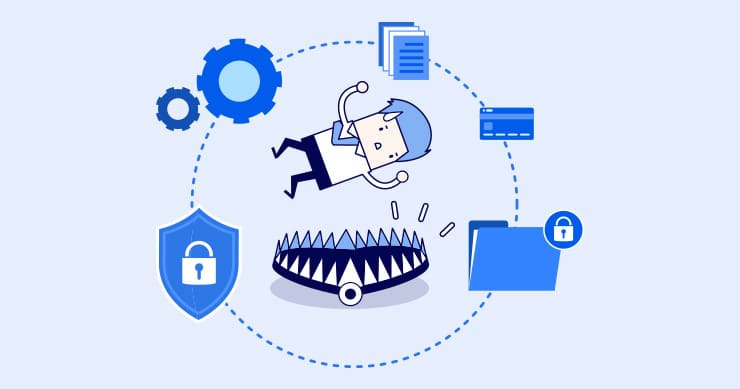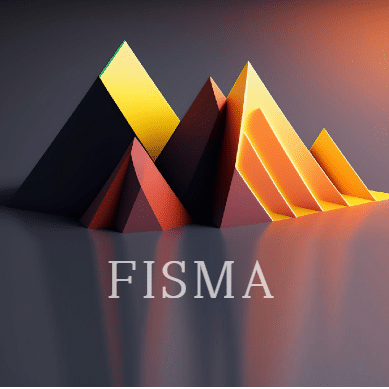The GRC Revolution
Unlike many catchphrases in the cyber dictionary, GRC (governance, risk, and compliance) is not a passing fad. The term was introduced two decades ago and has become a staple in business management. Truthfully, governance, risk, and compliance have been around for a lot longer than 20 years. Successful enterprises have conducted business using these three tenets for ages. However, most (if not all) enterprises did not approach these three concepts in an integrated manner to achieve business objectives and principled performance.
Why all the hype? Indeed, governance, risk, and compliance are not new ideas. However, the fusion of the three concepts into the now acronymed GRC model, and the way each branch interacts with and supports the other two in an integrated GRC solution, is revolutionary.
OK. You get it. GRC done right is where the magic happens. But how do you get these three letters off the ground and into the black hat?

Enter GRC Frameworks
A GRC framework is a model for managing governance, risk, and compliance in a company. In general, a framework is a physical or conceptual structure intended to serve as a support or guide for the building of something greater. A GRC framework identifies key strategies that can drive a company on a well-marked road to its goals.
A framework is a structured set of policies that details an organization’s strategies for aligning its processes with regulations, specifications, and long-term goals. A GRC framework can include risk controls, governance practices, and compliance directives. An extensive market has developed to help organizations create comprehensive frameworks that suit their needs. The COBIT 5 framework, the Unified Compliance Framework, and the NIST SP 800-53 are popular resources for organizations trying to establish and manage best practices in GRC.
Designed to help guide organizations toward building a secure foundation, an integrated GRC framework takes a proactive approach to risk management, operational resilience, and compliance readiness. Software and automated tools are often used to further assist in implementing the policies outlined in the framework.
Start Getting Value With
Centraleyes for Free
See for yourself how the Centraleyes platform exceeds anything an old GRC
system does and eliminates the need for manual processes and spreadsheets
to give you immediate value and run a full risk assessment in less than 30 days
5 Tips for Building a Successful Framework
- Executive Approval
Galvanize the top tier. As the ‘G’ in GRC suggests, senior management and board members must support the development of a GRC program before initiating the planning stages. When funding, staffing, and technology resources are made available by the executive suite, you can be well on your way to implementing a GRC framework.
- Identify Factors
Understand business goals and standards from the perspectives of different departments, including:
- Financial
- Reputational
- Product development
- Employee satisfaction
- End-user experience
Next, gather information about your organization’s current landscape:
- Define what goals you want to accomplish with the GRC model.
- Even before implementing a GRC framework, it’s likely that elements of governance, risk management, and compliance are already operating in some form. Understand what controls are already in place, and identify key stakeholders who will work on the GRC framework development.
- Determine the top risks in your company’s risk landscape and prioritize risks.
- Gather information about compliance measures that your industry is regulated by.
- Align Strategies
Develop strategies that map to business objectives and risks identified in the previous stage. Prioritize which goals have precedence and determine controls that need implementation to achieve objectives. Keep in mind that the overall aim of a GRC framework is to build an integrated approach that covers all aspects of the business.
A matrix is a useful visual representation that identifies the relationship between business processes, associated risks, internal controls, and the regulations to which the controls apply. Visualizing and analyzing these parameters enables stakeholders to cut out redundancy and confusion among overlapping processes.
Keep in mind that once all the segments of the equation have been accounted for, you are not dealing with a simple, or even complex, cause and effect statement. You’ll be looking at something that can be compared to a web and is sometimes quite enmeshed. Mathematically, a GRC framework diagram can be compared to an exponential equation, where, unlike a linear equation, the result of seemingly small disruptions or flaws can have a massive impact on a company. As Michael Rasmussen once remarked, “If we fail to see the interconnections of risk in the non-linear world of business, the result is often exponential to unpredictable.”
- Implement a GRC Solution
Implement a GRC solution that incorporates automation and artificial intelligence to empower teams, increase efficiency, and accelerate performance. A GRC platform that aligns with your business needs:
- Reduces redundancy
Centralized data and clearly defined strategies between departments enable visibility and enterprise-wide collaboration. The ability to locate data and crosswalk that data to be used by various departments enables teams to work better together. Additionally, data-driven foresight highlights dependencies and enables sounder decision-making by the leadership.
- Mitigates risk
Proactive risk assessment, mitigation techniques, developing an incident response strategy, and third-party vendor assessments all work to secure your enterprise and eliminate compliance-related fines and audit costs. Keeping a finger on the pulse of the ever-evolving threat landscape keeps your organization ahead of the game in the long run.
- Enhances processes
Improved operational efficiency streamlines business processes in a compatible framework, paving the way to confidently pursue new opportunities and markets. Business objectives are more easily fulfilled when corporate leaders possess the knowledge they need to achieve consistent growth.
- Assess and Monitor
A GRC strategy won’t last in its current version forever. It will evolve as the business inevitably changes. Designate stakeholders to assess and modify the strategy for the long term.
- Evaluate strategies on an ongoing basis to ensure that policies are working as intended.
- Provide regular briefings to senior management and employees on the status. Communicate milestones, successes, and challenges.
- Invest in a scalable solution that can conform and adapt as your company develops.
Compliant vs. Secure
A cybersecurity GRC framework is developed to satisfy the business and security objectives of a particular organization. It is distinctive and very personal to that organization’s infrastructure, processes, people, and technology. Fundamentally, it is driven by change and is a continuous process that needs to be assessed and managed to ensure capability and ultimately, protection. Above all, it should not be done to satisfy an industry or statutory provision of a third party.
Realizing that selecting a GRC compliance framework is a business decision rather than a technical list of compliance checkboxes that need to be marked as done is what the debate of compliance vs. security comes down to. Take time to think about what actions your company “must do” and what “would be nice to do” to select an appropriate framework that doesn’t just help you avoid audit fines, but protects your organization securely.
The more robust the framework, the more you can expect to have security and risk management in place for your company. Although it takes significant effort, it may be necessary to leverage a “meta-framework” like CSF or NIST cybersecurity framework to address controls and security requirements that are not mandated by law. This process can be referred to as “The Goldilocks Dilemma” of cybersecurity: “This framework is too tough, this one is too weak, this one seems to be just right!”
Centraleyes Can Help with Your GRC Framework
Get a customized solution for a GRC framework to get started on your journey to security with Centraleyes. With Centraleyes’ automated platform, you can perform risk assessments and build relevant metrics to compile a comprehensive analysis of GRC requirements for your company. With tens of pre-populated integrated risk and compliance frameworks that map and share controls, Centraleyes allows for a quicker, automated compliance and security process.
Start Getting Value With
Centraleyes for Free
See for yourself how the Centraleyes platform exceeds anything an old GRC
system does and eliminates the need for manual processes and spreadsheets
to give you immediate value and run a full risk assessment in less than 30 days





